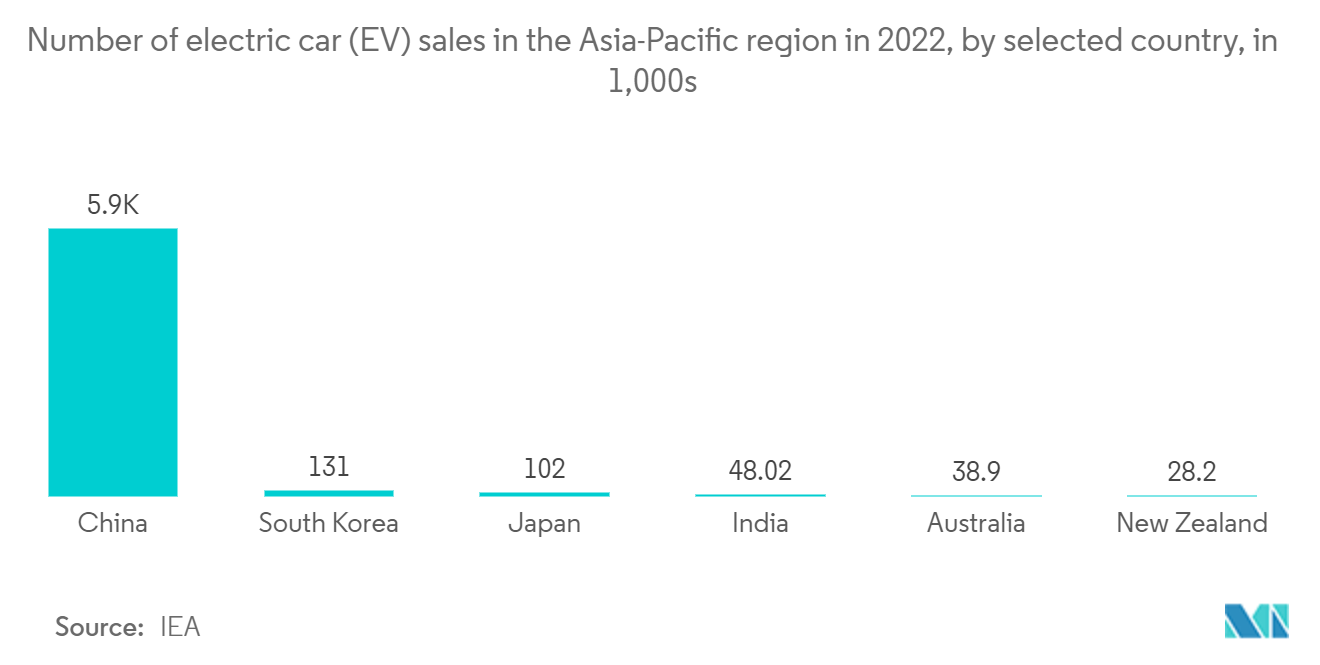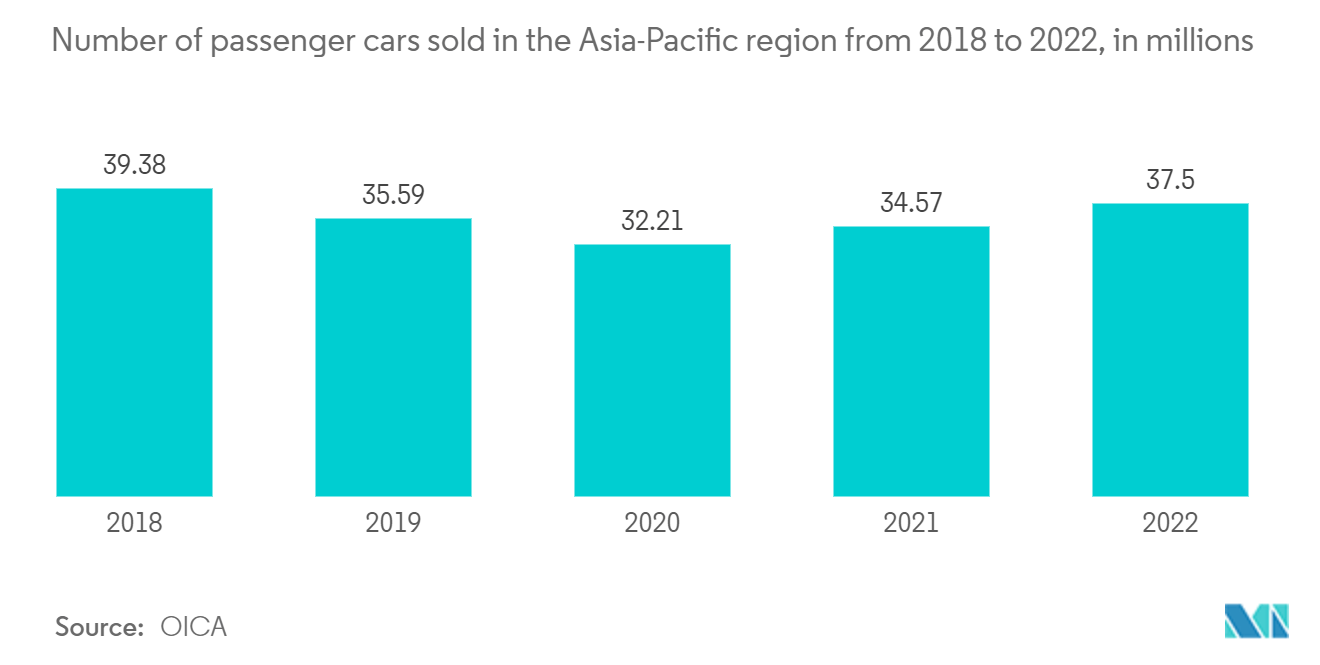Market Trends of Asia Pacific Automotive Logistics Industry
Demand for Electric Vehicles are increasing in the region
The APAC region leads the global electrified vehicle market, accounting for 11.7 million units in 2022, dominated by China. The shift to EVs is forecasted to accelerate due to improvements in battery technology, an expanding network of charging infrastructure, and rising customer demand.
India, which is the fourth largest automotive market in the world, saw a growth of 10% in 2022 on strong underlying demand reflecting the general economic recovery and consumers' preference for personal vehicles over public transportation.
The Indian Government's USD 3.2 billion incentive program, which has drawn USD 8.3 billion in investments, is helping the country's EV and component manufacturing ramp up. To promote the adoption of EVs, Thailand and Indonesia are also improving their policy assistance programs.
During 2022, the sales volume of hybrid EVs in Thailand amounted to almost 42000, the highest among other types of EVs. In 2022, the sales volume of all three types of EVs in Thailand grew by 48%. The Federation of Thai Industries (FTI) predicts that for this year, Thailand’s EV market will continue to gain momentum, with sales expected to reach between 25,000 and 35,000 units.
China's EV market is growing significantly with extensive government support and expansion in charging infrastructure. Increasing government efforts to push electric car sales to up to 25% of the car sales by 2025 have been driving the market growth considerably in China. To achieve the set target, the government has extended the tax exemptions for purchasing electric cars by 2023.

Amalgamation of Smart Technologies and Autonomous Vehicles
Autonomous vehicles are the future of transportation. Conviction reached by several Asian countries, most notably South Korea, China, and Japan, Each is working hard to change the shape of the transport ecosystem by experimenting, legislating, and developing technologies.
South Korea Seoul's metropolitan government has launched the first small-scale self-driving commercial bus service. The trip will be limited to about 3.5 kilometers, during which it will stop at two stations and not carry more than 7 passengers who can reserve their seats through a smart application. The bus will move, which will carry passengers free of charge during the first period, At low speed within a busy tourist and commercial area in the city center. With a budget of nearly USD 900 million, Korea is urging its public and private sectors to achieve its ambition to deploy autonomous vehicles on all its roads by 2026. Among them are 400 buses and taxis.
The Chinese government has amended the traffic safety law; It sets mandatory standards for vehicles on highways and on streets chosen by the local government. It has established a command center that receives information from sensors and cameras distributed across the city to ensure that the system runs as best as possible. Guangzhou, for example, stipulated that the passengers of public buses must be adults and have civilized behavior; it is preparing to deploy 260 self-driving vehicles on its public roads before the end of this year.
The airport in the Japanese capital, After 4 years of preparations, Level IV self-driving buses will begin transporting passengers within the airport facility, Supported by a network of cameras, sensors, and tracking devices, And on lengthy trials of different types of autonomous vehicles traveled about 130,000 kilometers without any incident, The final choice will be made on a 14-passenger bus, It uses GPS and a backup system that regularly scans the road ahead of the bus to take over the drive in case the main system fails. This bus will join 4 cars patrolling the airport perimeter and 12 trolleybuses pulling luggage containers. All of these are battery-powered; it is hoped that its number will double to take over all ground operations by 2030.

